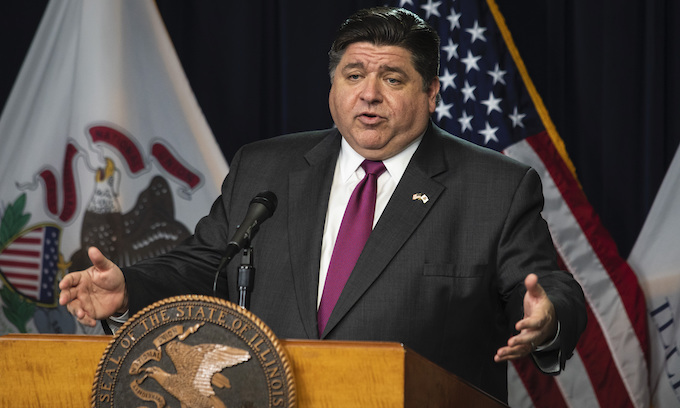As Illinois Gov. J.B. Pritzker tries to meet goals for daily COVID-19 testing and contract tracing, he’s not banking on any help from the federal government, he said Sunday CNN’s “State of the Union” with Jake Tapper.
“I have not been counting on the White House because there have been too many situations in which they’ve made promises not delivered,” Pritzker said. “Very recently they promised a lot of swabs, they’re supposed to arrive today, the first shipment of those, I’m looking forward to that. But what we’re doing is we’re going it alone, as the White House has left all the states to do.”
Illinois officials will continue to increase testing on their own, and are modeling contract tracing practices after Massachusetts’ approach, he said.
“We’ve had contact tracing across the state, we have county health departments that do that, we have our state health department which does that but what we’re now going to put in place and we’re in process is we’re imitating one of the great collaborative efforts that’s happened in the United States and that’s what’s happening in Massachusetts,” Pritzker said. “The Massachusetts contact tracing collaborative, we can do that in Illinois. We are, in fact. We’ve hired somebody who was at the CDC, who was an expert at their outbreak intelligence service and we think that we can have a massive contract tracing effort up in the next few weeks.”
A recent analysis by Harvard University and the STAT online medical publication determined that Illinois would need to conduct more than 64,000 tests every day before relaxing its stay-at-home order. Even with a record 20,000 tests in a single 24-hour period announced Friday, the state would need to more than triple its testing to meet that goal. And for the week ending Friday, the state averaged 16,432 tests a day.
“In order to reopen businesses, in order for people to feel confident, we have to make sure that we’re constantly growing those efforts,” Pritzker said.
He attributed the continued rise in positive cases to that increase in testing, and said the percentage of tests that are positive has not been going up.
“The truth is that what we watch are the positivity rates, you know the rates at which people are testing positive, so is that rate stable or going down, and it is in Illinois,” Pritzker said. “We also watch the hospitalization rate, how many new people are entering the hospital, which is roughly flat around the state, and then we are watching the number of hospital beds that are available.”
Officials know that they need to maintain a certain number of open beds in case new cases surge, and could also turn elective surgeries back off to free up resources, Pritzker said. People are still required to wear masks in public.
“We will not reopen unless we meet all of the standards I’ve set for doing so,” he said.
Illinois has also seen examples of cases of serious illiness in children that may be linked to COVID-19, which have been tied to deaths in New York, but many questions remain unanswered, Pritzker said.
“It hasn’t been yet categorized in Illinois but we just put together a group within our department of public health to track these cases and of course to bring in folks that could help us answer the question, how do we protect children from this, what is causing this particular strain, is it really coronavirus?” Pritzker said. “I think we all thought that children perhaps were less susceptible to coronavirus, but now perhaps this is a mutation of it that we haven’t seen before but whatever it is, it’s my goal and our group’s goal to make sure that we protect the children of Illinois.”
___
(c)2020 the Chicago Tribune
Visit the Chicago Tribune at www.chicagotribune.com
Distributed by Tribune Content Agency, LLC.
—-
This content is published through a licensing agreement with Acquire Media using its NewsEdge technology.



















Recent Comments